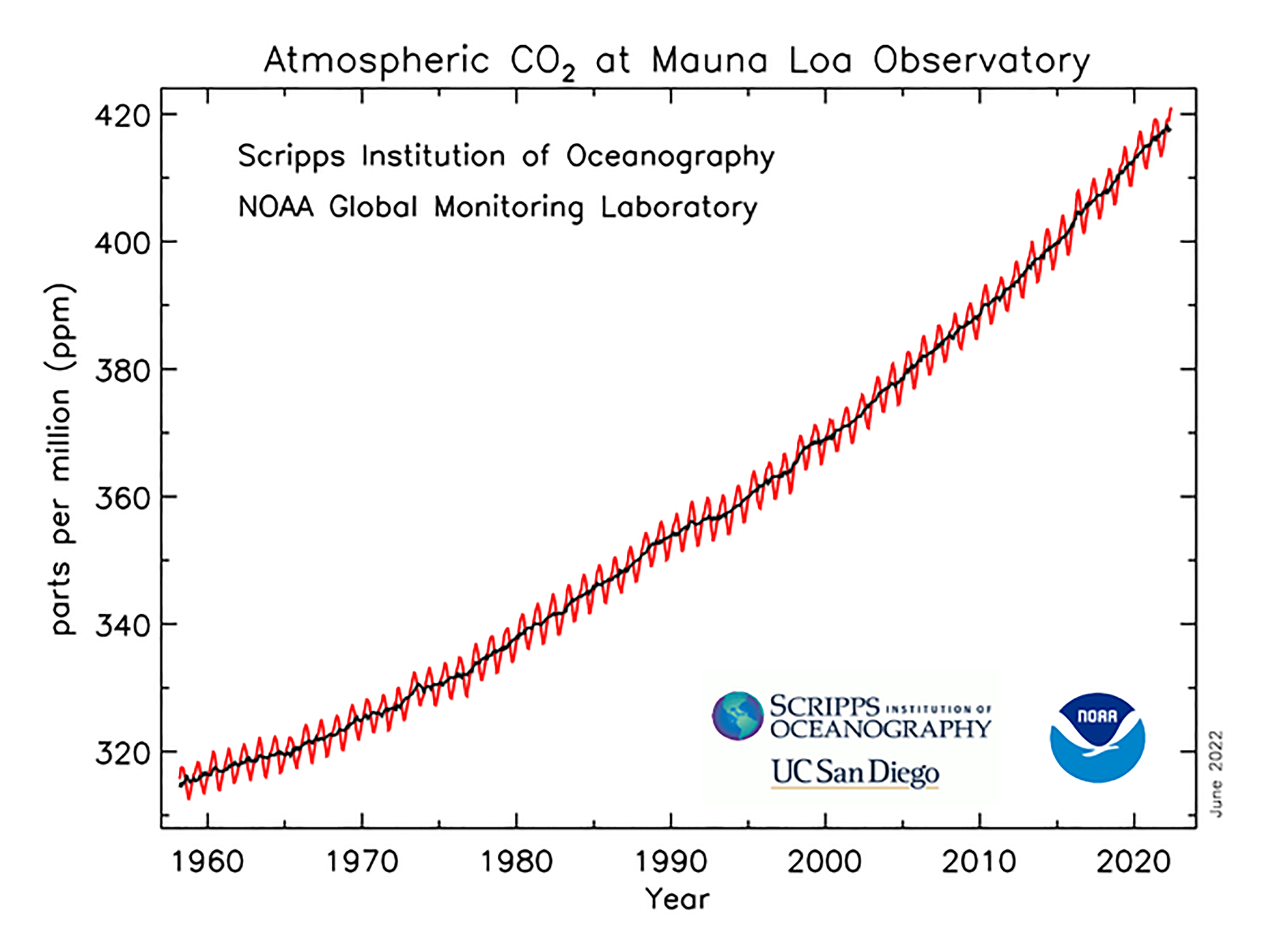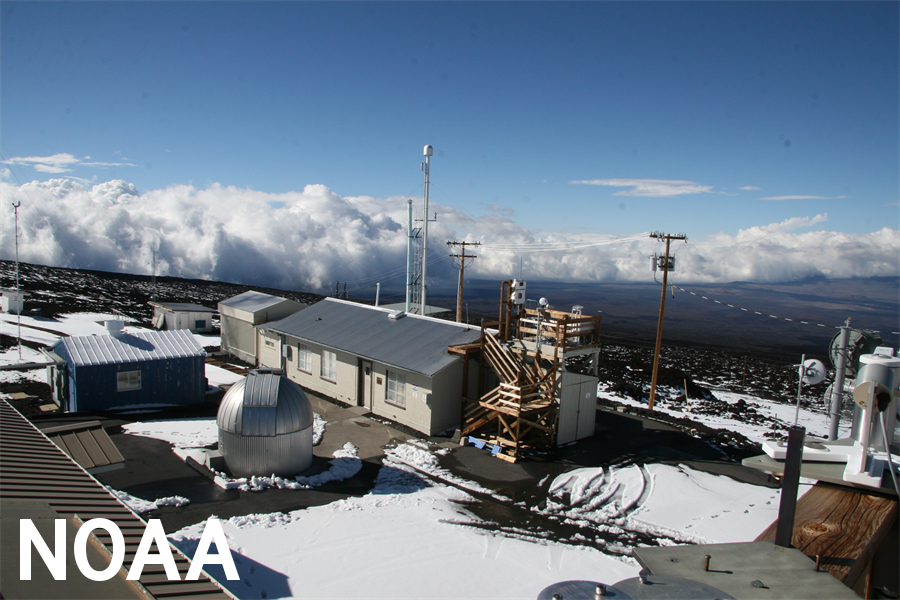
The monthly mean carbon dioxide measured at Mauna Loa Observatory, Hawaii, the longest record of direct measurements of CO2 in the atmosphere. (NOAA Global Monitoring Laboratory, Scripps Institute of Oceanography at the University of California San Diego. )
The monthly mean carbon dioxide measured at Mauna Loa Observatory, Hawaii, the longest record of direct measurements of CO2 in the atmosphere. (NOAA Global Monitoring Laboratory, Scripps Institute of Oceanography at the University of California San Diego. )
Carbon dioxide in the Earth's atmosphere is fifty percent higher than it was before the industrial revolution began, according to U.S. National Oceanographic and Atmospheric Admonustration (NOAA).
It says the CO2 measured at the Mauna Loa Atmospheric Baseline Observatory on top of Hawaii's Big Island peaked for 2022 at 421 parts per million in May, pushing the atmosphere further into territory not seen for millions of years.
READ MORE
Demining Kyiv before summer
Mona Lisa cake attack
Beavers in London
NOAA's measurements of carbon dioxide at the observatory averaged 420.99 parts per million (ppm), an increase of 1.8 ppm over 2021. Scientists at the Scripps Ocenaographic Institute independently calculated a monthly average of 420.78 ppm.
NOAA Administrator Rick Spinrad said: "The science is irrefutable: humans are altering our climate in ways that our economy and our infrastructure must adapt to."

The Mauna Loa Observatory in Hawaii is a benchmark site for measuring carbon dioxide, or CO2. (NOAA)
The Mauna Loa Observatory in Hawaii is a benchmark site for measuring carbon dioxide, or CO2. (NOAA)
"It's depressing that we've lacked the collective will power to slow the relentless rise in CO2," said geochemist Ralph Keeling, who runs the Scripps program at Mauna Loa.
"Fossil-fuel use may no longer be accelerating, but we are still racing at top speed towards a global catastrophe."
CO2 levels were consistently around 280 ppm for almost 6,000 years of human civilization before the industrial revolution.
Humans have since generated an estimated 1.5 trillion tons of CO2 pollution, mostly in Europe in the U.S., and that will continue to warm the atmosphere for thousands of years.
The NOAA says CO2 levels are now comparable to the Pliocene Climatic Optimum, between 4.1 and 4.5 million years ago, when they were close to, or above 400 ppm.
During that time, sea levels were between 5 and 25 meters higher than today, high enough to drown many of the world's largest modern cities.
Temperatures then averaged 7 degrees Fahrenheit higher than in pre-industrial times, and studies indicate that large forests occupied today's Arctic tundra.

